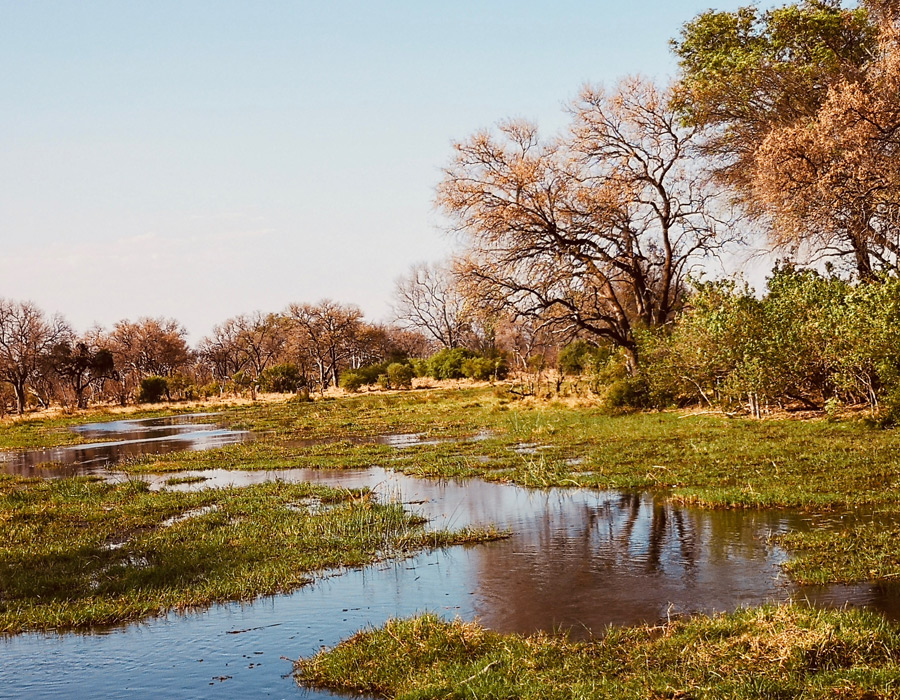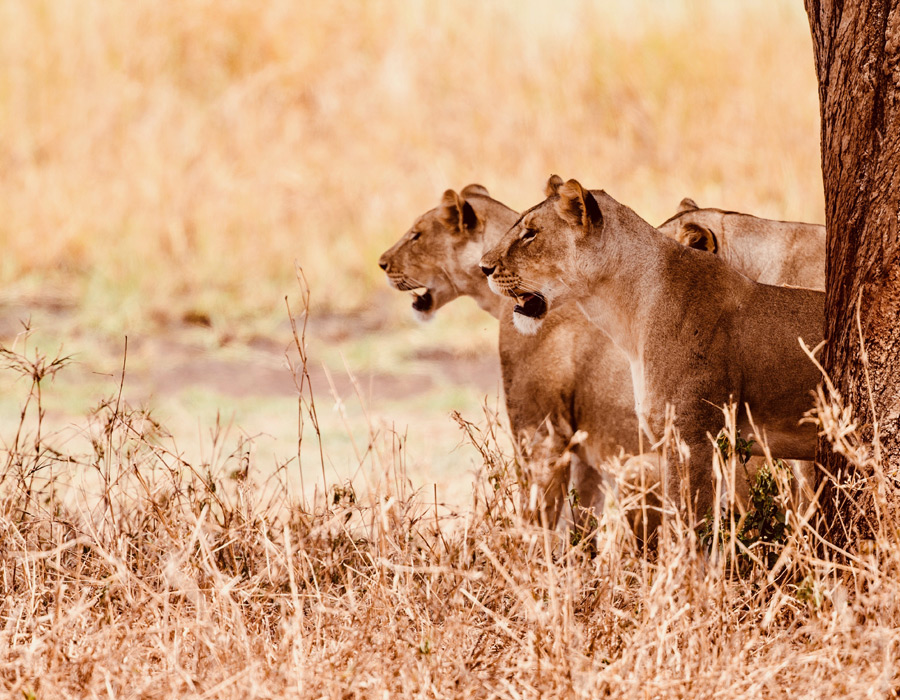Not places. Stories.
Your journey.
We carefully selected the most magnificent places for you. Transform them into touching, thrilling and maybe even life-changing stories and memories to take home.

Maun, Gate to the Okavango Delta

Moremi Game Reserve

Khwai River

Savuti National Park

Chobe National Park

Victoria Falls - Mosi-o-tunya

Nata Bird Sanctuary

Kubu Island - Makgadikgadi Pans
National Park

Nxai Pan National Park

Gate to the
Okavango Delta. Maun.

Welcome to one of Africa’s most extraordinary places. There is something elemental about the Unesco World Heritage listed Okavango Delta: the rising and falling of its waters; the daily drama of its wildlife encounters; its soundtrack of lion roars, saw-throated leopard barks and the crazy whoop of a running hyena; and the mysteries concealed by its papyrus reeds swaying gently in the evening breeze. Viewed from above on a scenic flight from Maun, the Okavango is a watery paradise of islands and oxbow waterways.
A famous spot for all kinds of occasions is Matlapaneng Bidge. The so called Old Bridge was built over 100 years ago to cross the Thamalakane river.
One can still walk across or sit down and enjoy the mesmerizing sunsets, while flocks of birds fly over and mirror in the calm waters.

Moremi Game Reserve

The Moremi Wildlife Reserve is the official nature reserve within the Okavango Delta. This jewel was voted the “Best Wildlife Reserve in Africa” by the renowned African Travel and Tourism Association at South Africa’s leading tourism fair.
The habitats range from Mopane and
thorny forests over dry savannahs, shoreline
forests, alluvial land, marshes and waterways, lagoons and islands.
The silouettes of dead trees, drowned or burned, give the delta a hint of the apocalypse as well as confidence that something new will emerge from all that has been destroyed.

Khwai River
Khwai river is the lifeline for all kinds of species. The big ones are easy to find. So, go look for the small fascinating creatures.
The enchanted Khwai River can be described as a combination of pretty lagoons and winding channels of papyrus, which is scenically beautiful and naturally peaceful. The Khwai River is surrounded by little islands that feed off the borders of the river, and it is fed and re-nourished by Angola’s annual summer rains, which take approximately four months to flow down into Botswana. The length of time for the Khwai River to flow is due to the fact that the Botswana terrain is very flat and dry.

Savuti Marsh

The often biscuit-dry and dramatic stretch of grassland and desert-like landscape covers almost 5,000 sq. km . The Magwikhwe Sand Ridge and the desolate Savuti Marsh are all that remain of a once great lake that covered much of northern Botswana. Geological changes and the erratic temper of the Savuti channel leaves the region dry for long periods of time.
The word Savute has taken on mythic meanings fit for legends on the safari circuit of Southern Africa. This cult celebrity is partly due to the fact that the region has a high density of predators and that they are some of the most studied in the world. The concentration of predators is due to the enigmatic character of this landscape.

Chobe River
Chobe is all about the river.
The Chobe River is one of Botswana’s – and Africa’s – most iconic sights. A startling ribbon of blue in a parched landscape, giving rise to teaming herds of animal life, it’s something to lift the spirit and makes the heart glad.


We think of Africa’s renowned land mammals when we consider her parks, but the wealth of bird species are just as dazzling. There’s over 460 commonly spotted bird species in the Chobe National Park alone. Just look at the back of the zebras.
… and yes, Chobe has the highest concentration of elephants in Africa, estimated at around 70,000. The elephants are Kalahari elephants which are largest in stature with brittle ivory and short tusks.
Victoria Falls
One of the natural wonders of the world. The Victoria Falls truly are a remarkable sight. At over 1.5 kilometers wide and over 100 meters tall, this is the largest falling curtain of water in the world.

Nata Bird Sanctuary

The prominent wildlife species in Nata Bird Sanctuary are reported to number 165 bird species. One of them, the great white pelican is one of the most dominant species. They arrive annually in large numbers as part of their migration during the winter season.
The sanctuary is of international importance due to its population of 250,000 lesser flamingo and greater flamingos. Greater flamingos feed on brine shrimps, worms and tiny crustaceans, while the lesser flamingos feed on algae; all are plentiful in the warm shallow waters of salt pans.

Makgadikgadi Pans

The salt pans are silent witnesses of a
super lake that once stood here. Climate changes gradually evaporated the lake and left behind enormous salty deposits. The white pans are dotted with islands and mysterious rock formations on which thousands of years old baobab trees, grasses and bushes defy the unrelenting hardness of this region.
Kubu Island is probably the most impressive one. Kubu means “large rock” in Kalanga language. The entire island is a national monument, and is considered a sacred site by the indigenous people of the area.

Nxai Pan
The cluster of millennia-old baobab trees in Nxai Pan National Park owes its name, Baines Baobab, to the man known to have discovered them, Thomas Baines.
Baines’ Baobabs is an acient oasis, because it’s seasonal home to large herds of zebra and wildebeest. In the rainy season between December and April the pan becomes grassy and attracts these animals in their tens of thousands.


The ‘x’ in Nxai represents a palatal click sound. Click sounds are typical of the Khoisan languages and some southern Bantu languages.